Klingon B10 Battleship |

The General War, the titanic conflict between the Alliance (the United Federation of Planets along with the Gorns, Kzintis, and Tholians) and the Coalition (including the three evil empires: Klingons, Romulans, and Lyrana) was entering its second decade when the Klingons determined to break the stalemate by fielding the biggest ships ever built. This was to become the B10 class, four ships each more than twice as big as the D7 and Katinga battlecruiser classes and a third bigger than the C8 dreadnought series. The Federation Star Fleet termed these massive ships "battleships" somehow forgetting that 400 years earlier dreadnoughts were battleships.
The B10s were truly massive, reaching 500,000 deadweight tons, far exceeding the more numerous heavy cruisers and battlecruisers which came in around 200,000 deadweight tons.
For production efficiency, the C8 dreadnoughts had simply used three of the 45-gigawatt engines that were used (in pairs) by the D7 and Katinga. The B10s mounted four of these engines, each of which also mounted a pair of disruptors. The 180,000-gigawatt warp engine plant were supplemented by 33,000 gigawatts of power from the sublight impulse drives and 18,000 gigawatts provided by the fusion reactors. Batteries could, for a short while, provide another 36,000 gigawatts, or save unused power for later.
The crew was 810, including the Marine complement of 160 troops.
Models of the B10 are available on Shapeways in several scales and materials.
While the D7 mounted four disruptors as its heavy armament, the B10 had eight similar weapons facing forward and two facing to the rear. (The rear-firing disruptors were to deal with any enemy that maneuvered behind the battleship as just about any starship could turn faster than a B10. Starships do not mount fore and aft turrets, but mount most of their weapons facing forward and dogfight like aircraft.) These were heavy energy weapons with a maximum range of 400,000 kilometers, although they did fairly little damage at that extreme range. The ship was designed to close to 80,000 kilometers or less from the enemy, at which point it could overload the weapons with double the normal energy charge and produce truly massive amounts of damage. Disruptors produced about half as much damage as the Federation's photon torpedoes but fired twice as often. At 10,000 kilometers the eight forward-firing disruptors, double loaded with energy, could reduce a Federation battlecruiser such as the USS Constellation to very small bits of scrap metal in a single volley.
More numerous were the fifteen phasers, which fired phased-energy beams. Combined, these fifteen weapons on their own could penetrate the shields of a Federation battlecruiser and leave it severely crippled. Combined with the disruptors these energy weapons could reduce a Federation dreadnought to scrap metal in a single volley at 20,000 kilometers. There were also nine smaller short-range phasers and two racks of a dozen hyperwarp anti-drones intended to provide protection from incoming missiles or anything small, such as an armed shuttlecraft, that wandered too close.
But that was not all. Being Klingons they fitted the B10 battleships with eight racks, each holding six nuclear-tipped self-guiding missiles, for a total of 48 missiles ready to launch and 100 more in the cargo holds for reloads. About ten of these missiles would reduce a Federation battlecruiser to scrap metal, assuming that the target did not use its own offensive weapons to shoot down the incoming missiles, leaving it unarmed and facing the B10's direct-fire weapons.
[The B10s also mounted a pair of stasis field generators. These could stop time in a small area 30,000 kilometers in front of the ship, freezing a target ship in place until other Klingon ships and waves of nuclear missiles were in position to strike. The B10 had to completely stop to use this weapon, but being so massive this maneuver (which made the battleship vulnerable to the enemy) was not all that risky. Once the target ship was released, the enemy crew would have about one second to realize what had happened before they were destroyed.]
Construction of the ships proceeded at a glacial pace as no empire had ever built anything that big, and no one understood what construction technologies would be needed to keep them in one piece at their maximum speed of warp factor 9.25. [Other empires started construction of their own battleships (such as the Federation's Mars-class) but also made only slow progress.] Invincible was completed just at the end of the General War and fought against the subsequent invasion from the Andromeda galaxy. Insatiable was modified during construction to carry two dozen armed shuttles (equipped with phasers and missiles) and also fought the Andromedans. Inviolable was the only battleship to see combat in the General War. The forward section (the rear being incomplete) was used in combat against an Alliance offensive. Invulnerable, the fourth ship, also saw her forward section used in combat (against the Andromedans). Various plans were made to combine the forward sections of Inviolable and Invulnerable with the rear hulls of huge cargo ships or smaller C8 dreadnoughts, but none of these came to fruition. The Klingons also built a "fast battleship" they called the B9, which had the same powerplant but on a hull massing only 420,000 tons and mounting about 80% of the B10's weapons.
The two ships that were fully operational, Invincible and Insatiable, were a key element in defeating the Andromedan invasion, allowing the empires of the Milky Way galaxy to get back to what they did best -- fight each other.
Links to find B10 on Shapeways and our online store
 |
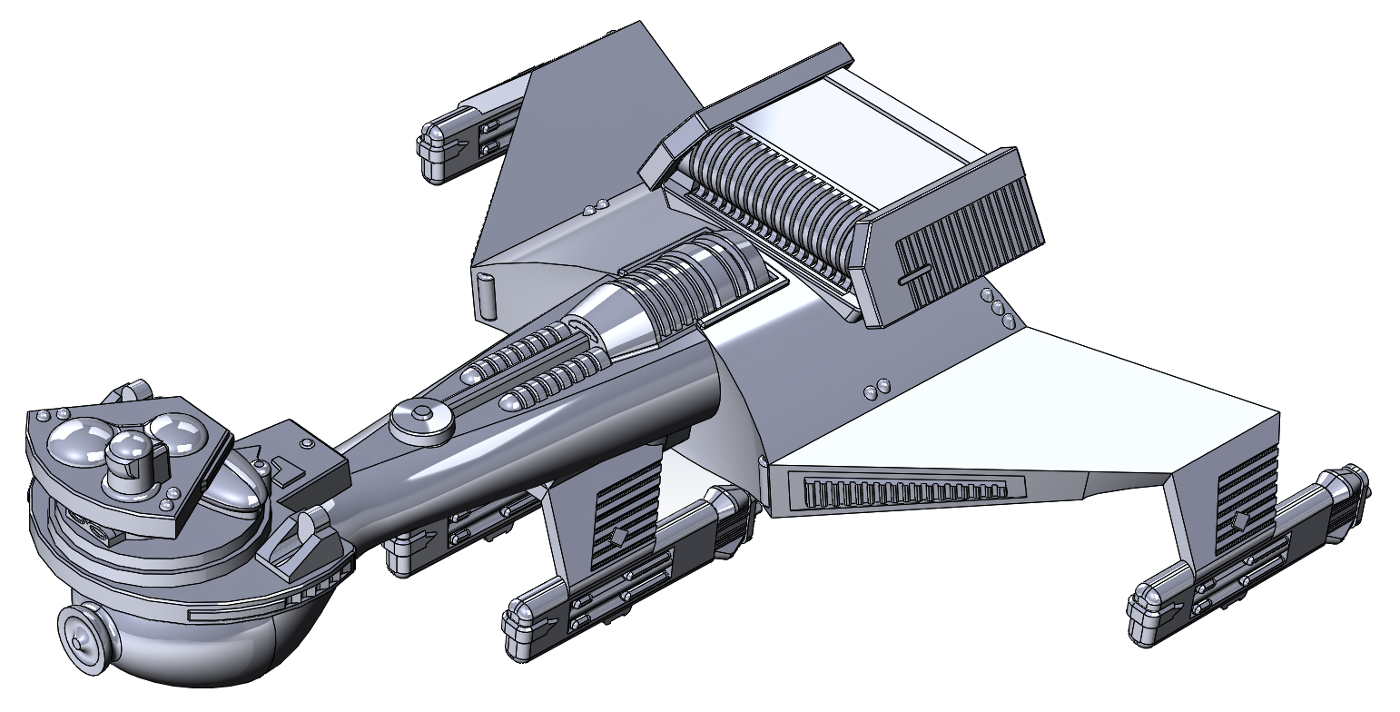 |
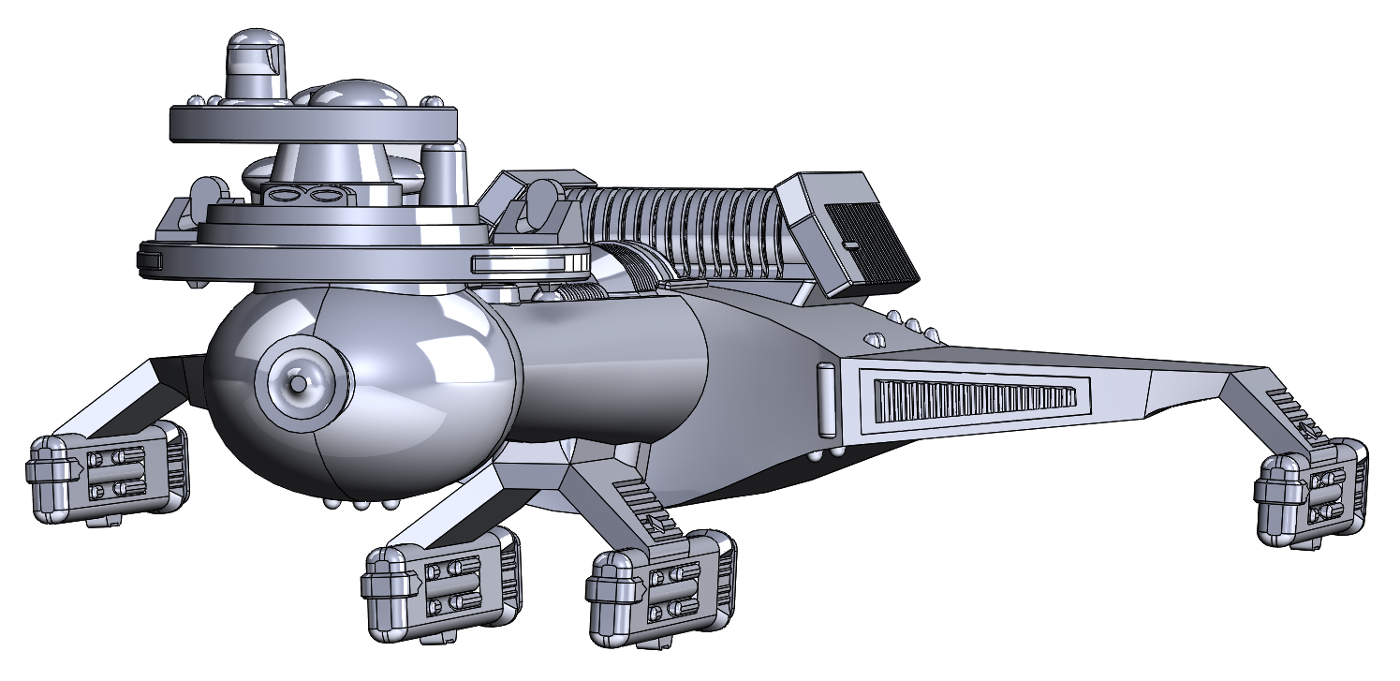 |
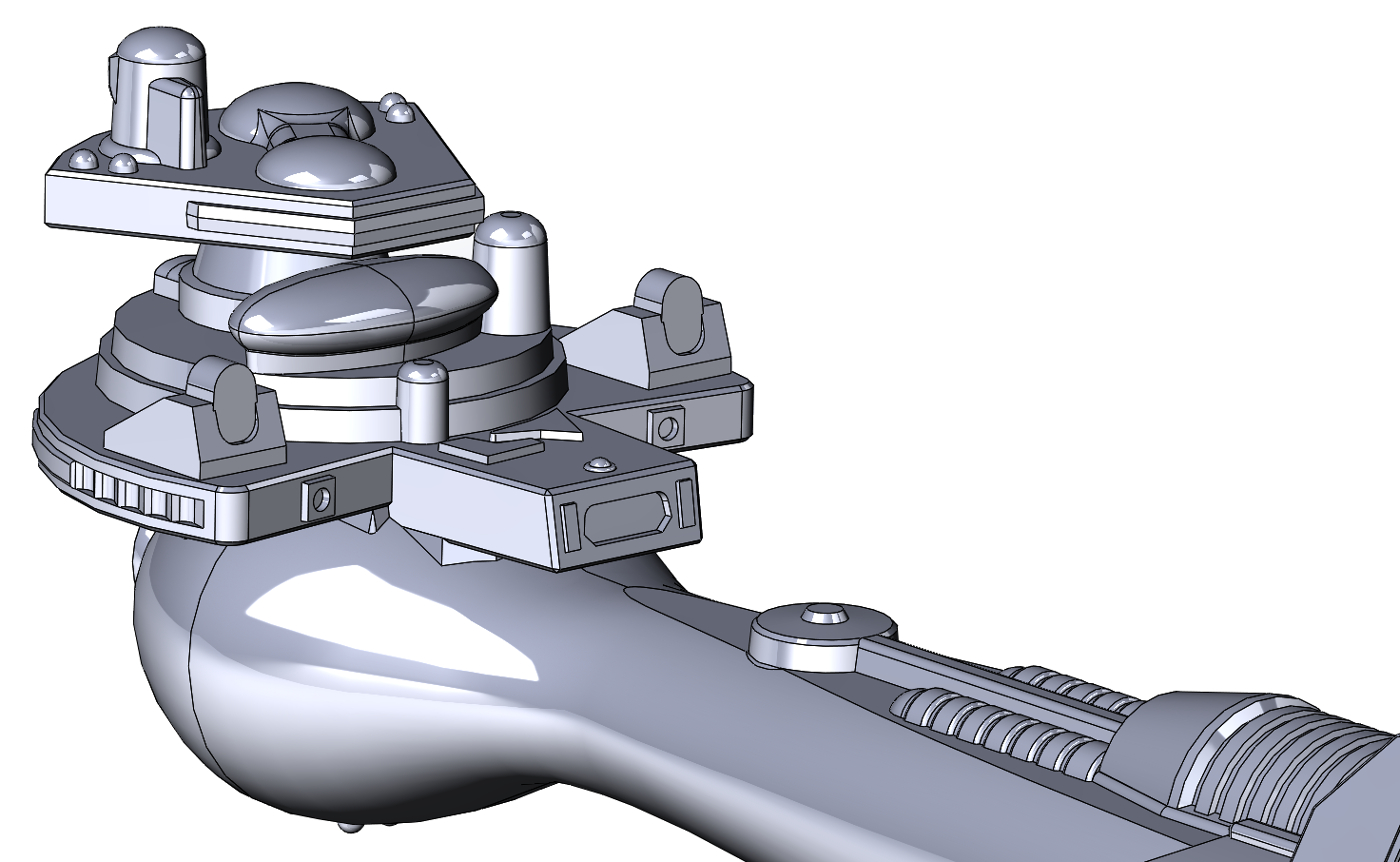 |
 |
 |
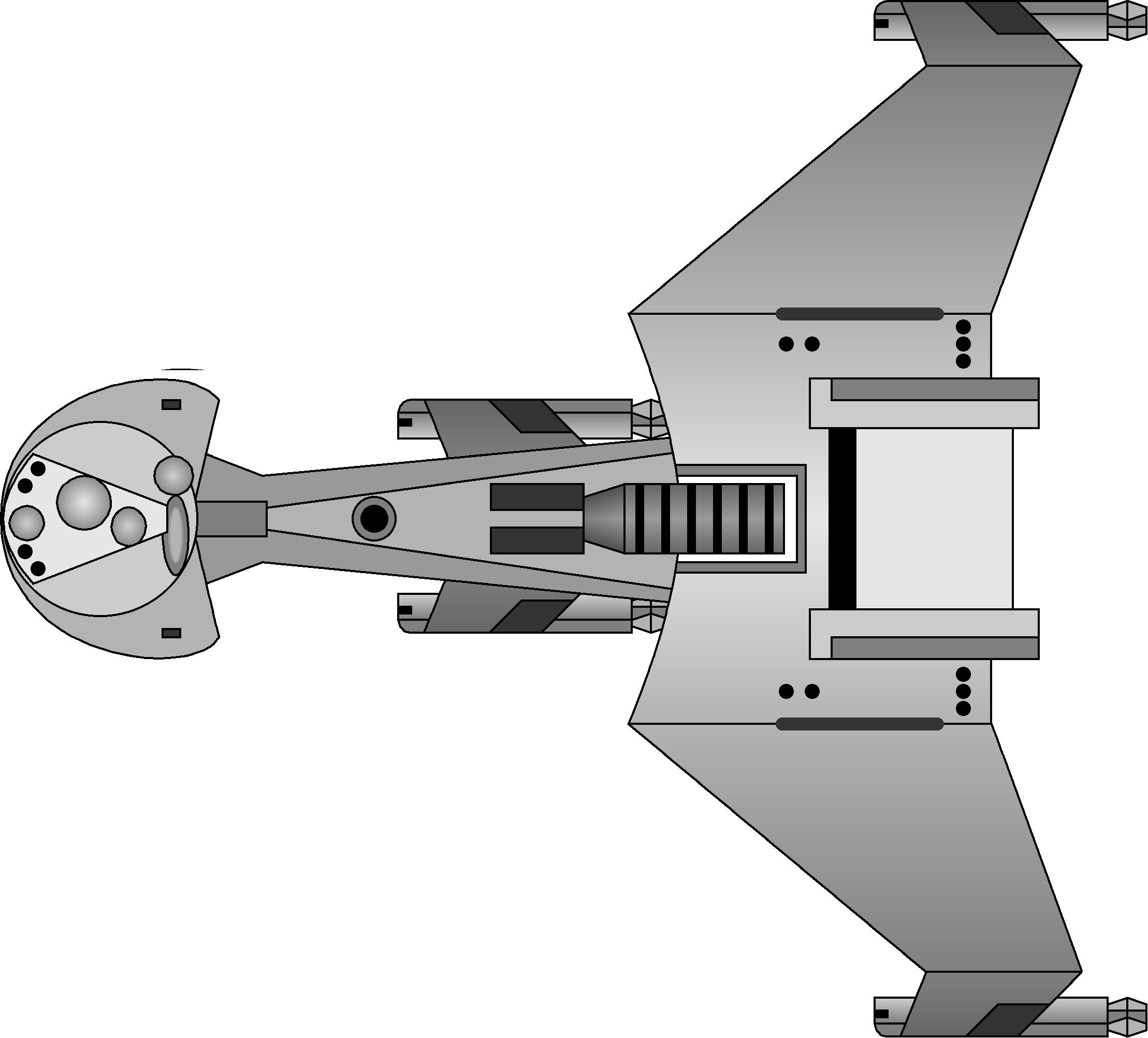 |
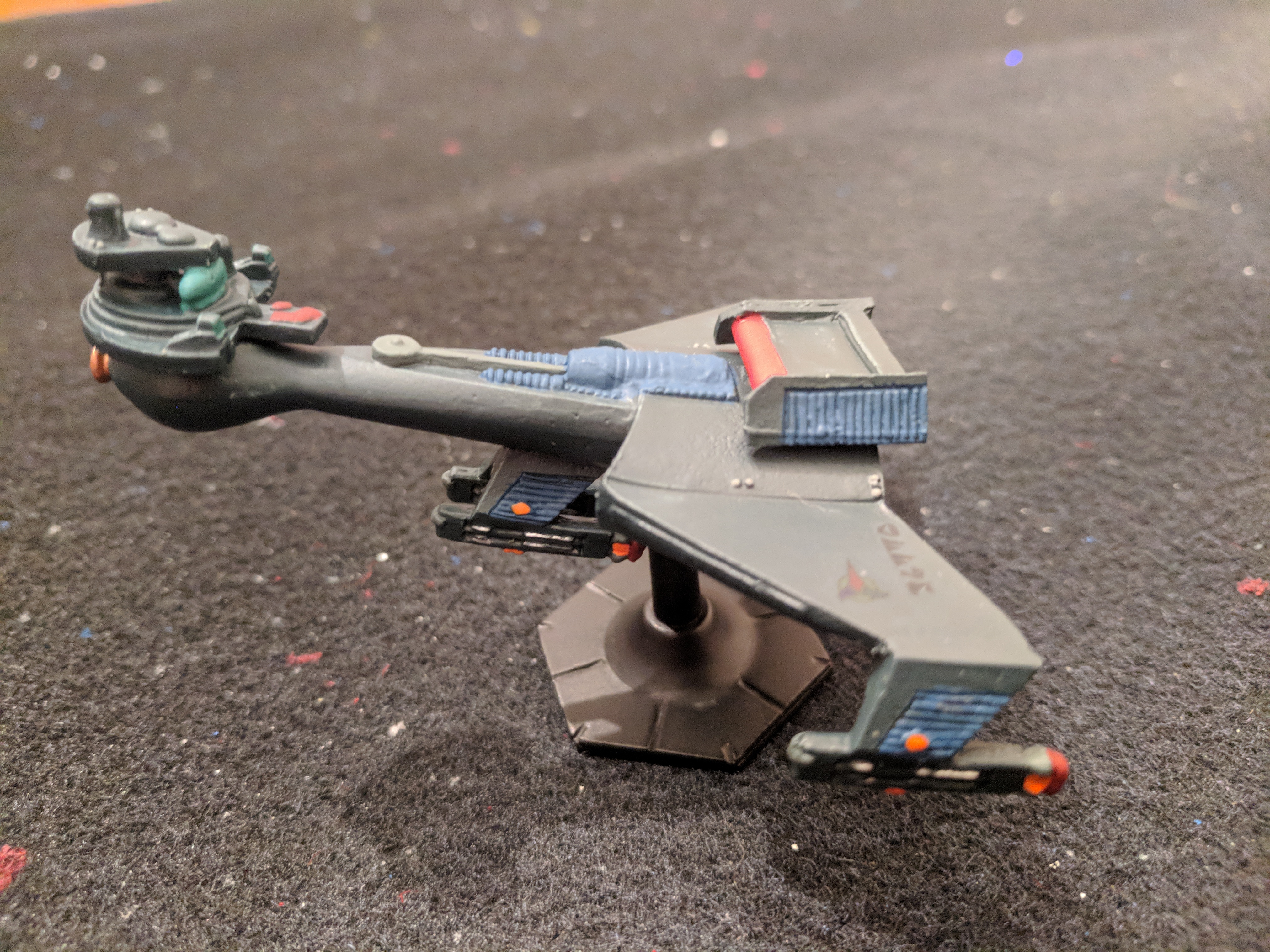 |
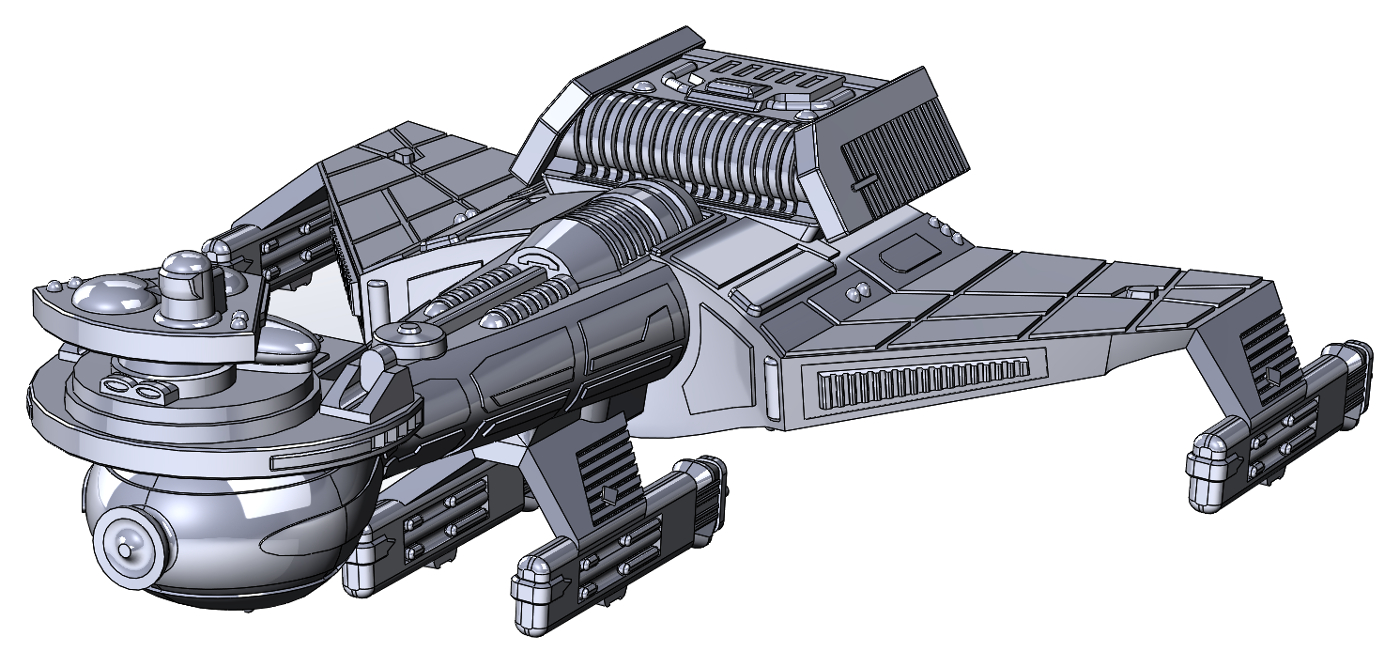 |
 |
 |
 |
 |
 |
 |
 |
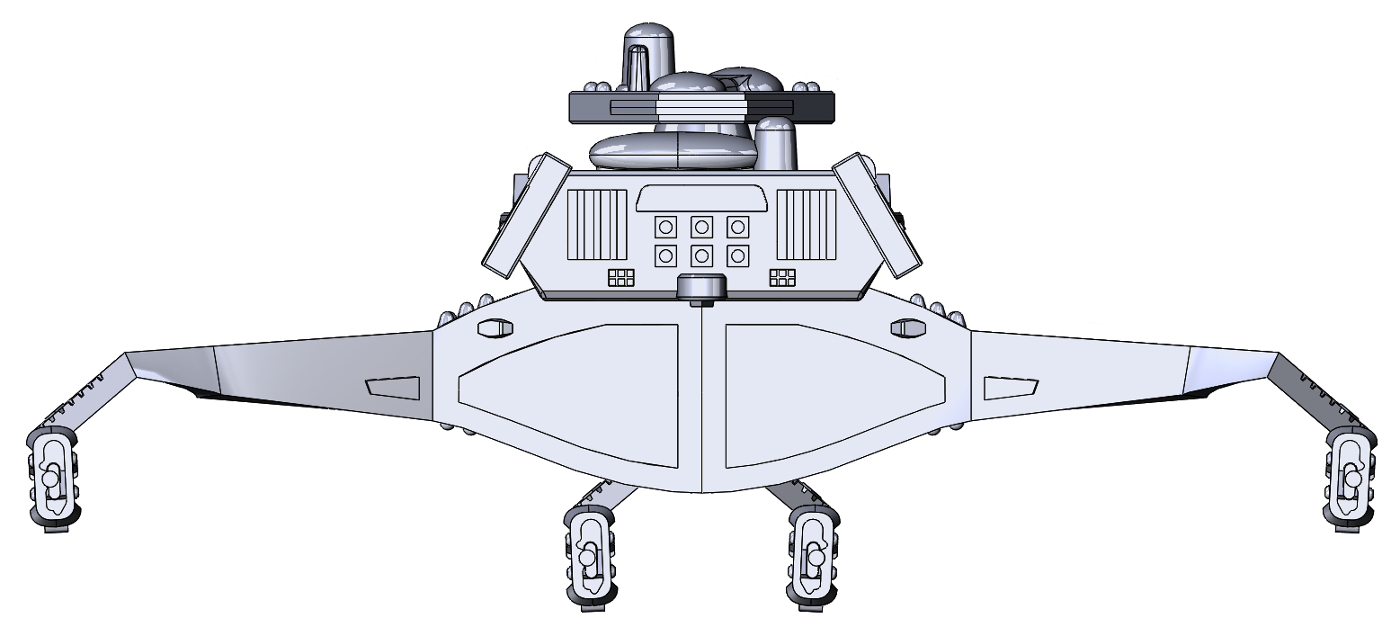 |
 |
 |
 |
| Klingon B9 Battleship | |||
 |
 |
 |
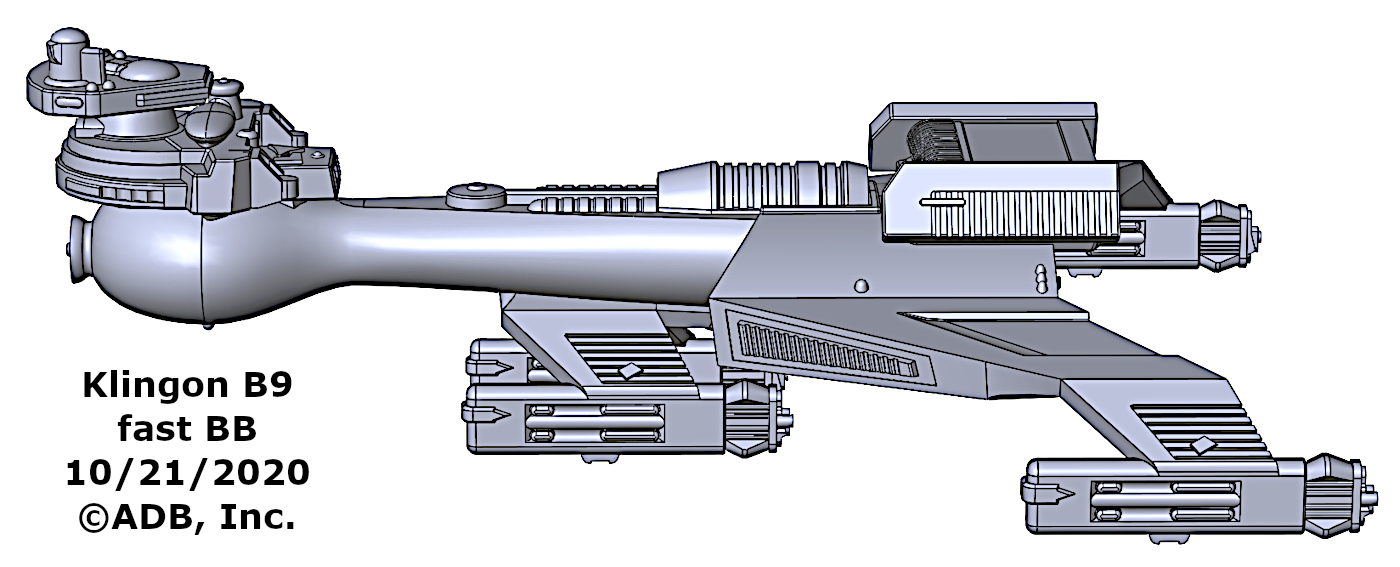 |
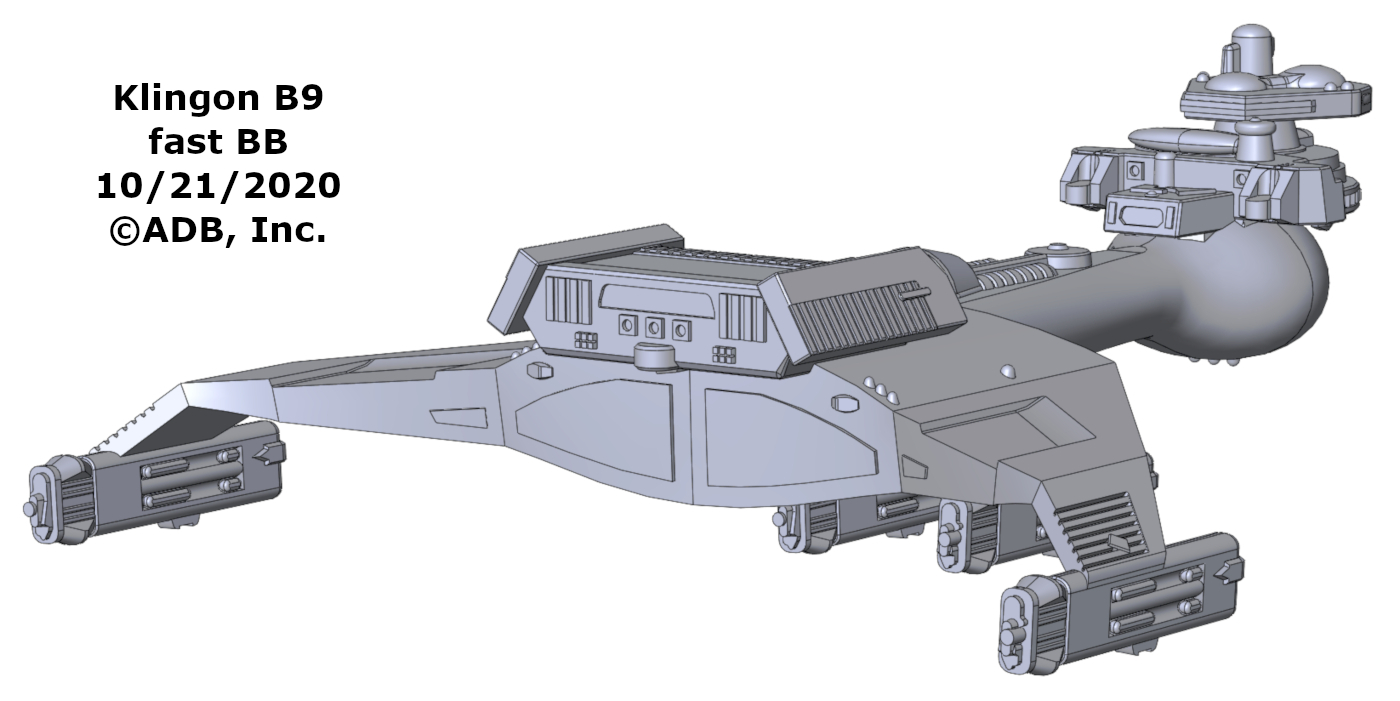 |
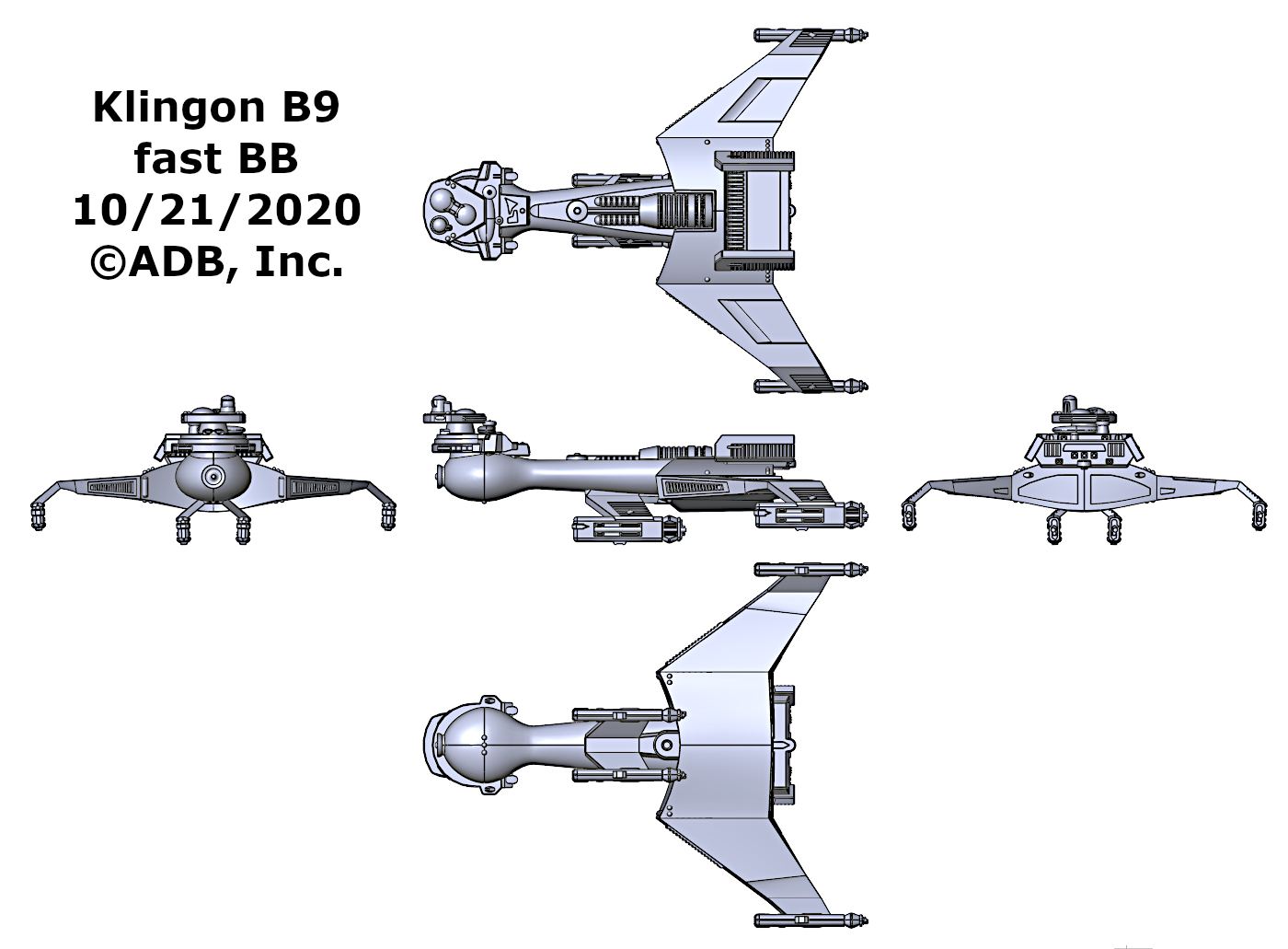 |
||
| At one point, the Klingons were desperate for a really big ship, but the next B10 wasn't finished. The boom part was so they mated it to the rear hull of a fleet transport carrying "battle pods" (which are like cargo pods stuffed full of weapons and nuclear reactors). | |||
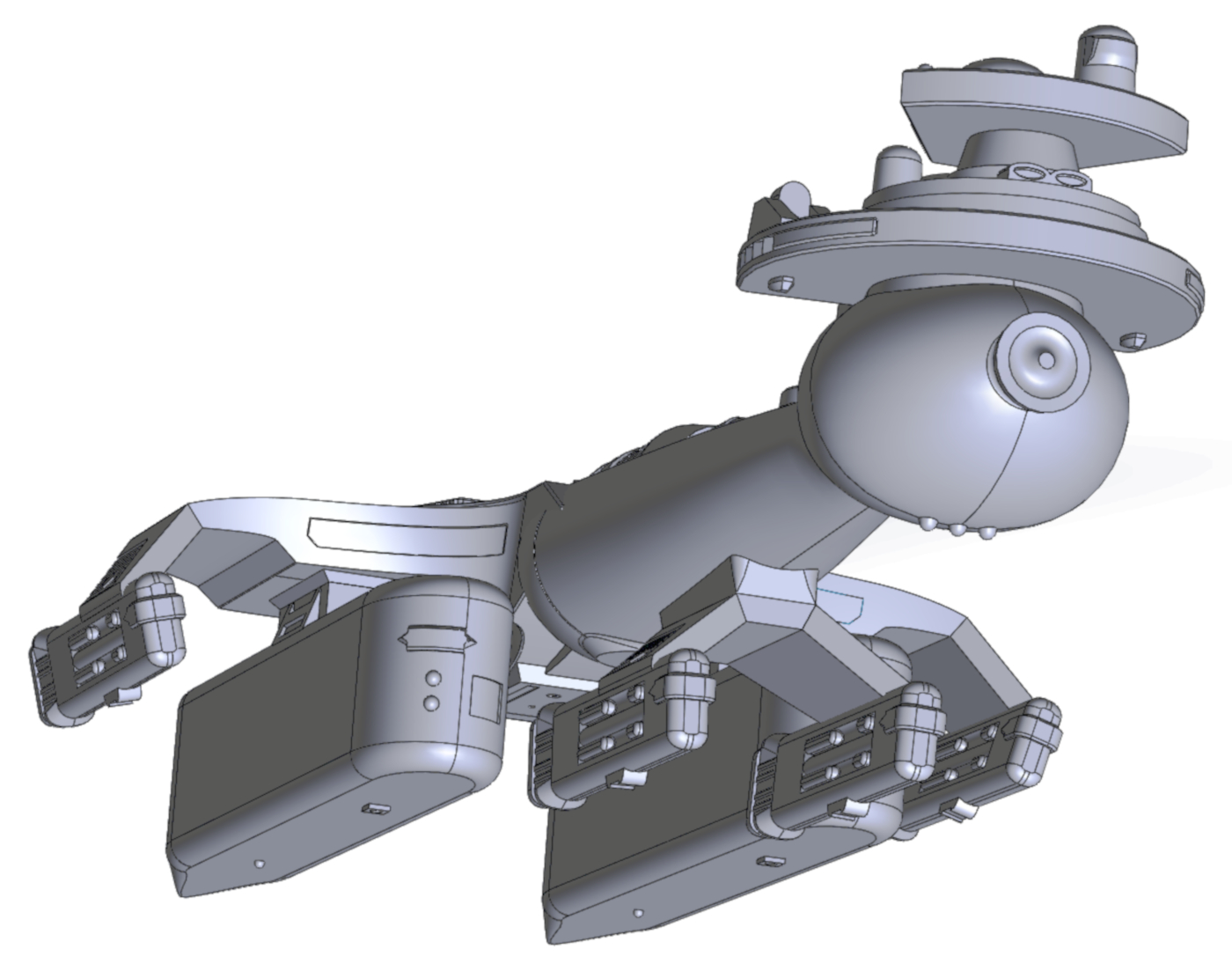 |
 |
||
| Copyright © 1991-2024 Amarillo Design Bureau, All Rights Reserved | Updated 30 March 2021 |